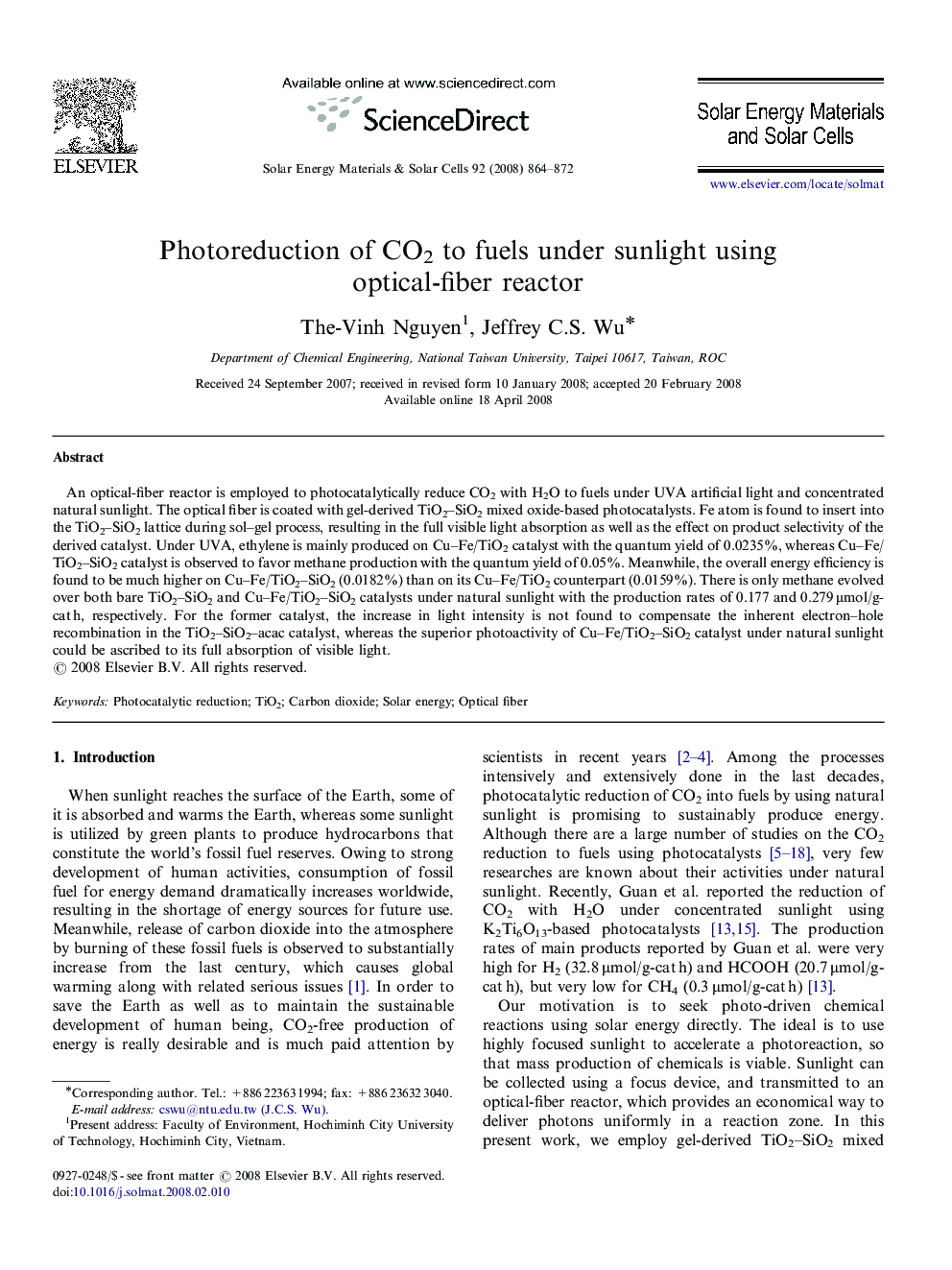| Article ID | Journal | Published Year | Pages | File Type |
|---|---|---|---|---|
| 80721 | Solar Energy Materials and Solar Cells | 2008 | 9 Pages |
An optical-fiber reactor is employed to photocatalytically reduce CO2 with H2O to fuels under UVA artificial light and concentrated natural sunlight. The optical fiber is coated with gel-derived TiO2–SiO2 mixed oxide-based photocatalysts. Fe atom is found to insert into the TiO2–SiO2 lattice during sol–gel process, resulting in the full visible light absorption as well as the effect on product selectivity of the derived catalyst. Under UVA, ethylene is mainly produced on Cu–Fe/TiO2 catalyst with the quantum yield of 0.0235%, whereas Cu–Fe/TiO2–SiO2 catalyst is observed to favor methane production with the quantum yield of 0.05%. Meanwhile, the overall energy efficiency is found to be much higher on Cu–Fe/TiO2–SiO2 (0.0182%) than on its Cu–Fe/TiO2 counterpart (0.0159%). There is only methane evolved over both bare TiO2–SiO2 and Cu–Fe/TiO2–SiO2 catalysts under natural sunlight with the production rates of 0.177 and 0.279 μmol/g-cat h, respectively. For the former catalyst, the increase in light intensity is not found to compensate the inherent electron–hole recombination in the TiO2–SiO2–acac catalyst, whereas the superior photoactivity of Cu–Fe/TiO2–SiO2 catalyst under natural sunlight could be ascribed to its full absorption of visible light.
